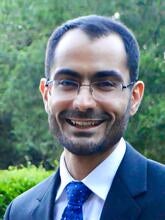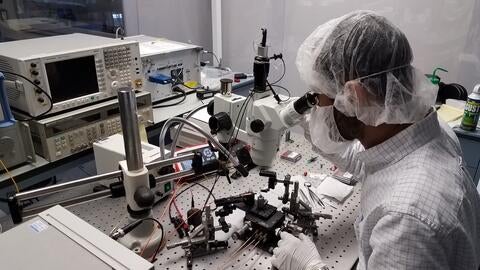
The National Science Foundation has awarded UCR Assistant Research Professor Hossein Taheri a $475,000 grant to probe the utility of “time crystals,” which are being studied as a new state of matter.
Theorized by the Physics Nobel Laureate Frank Wilczek about a decade ago, time crystals are in a way similar to snowflakes, quartz, and silicon crystals. Like these more familiar spatial crystals, time crystals embody the concept of many interacting smaller parts arranged in definite symmetrical patterns. However, with time crystals, the patterns emerge in the domain of time, rather than space, explained Taheri, a member of UCR’s Department of Electrical and Computer Engineering.
The unique properties of time crystals such as strong rigidity and pattern stability give them significant potential utility for accurate measurements of time and distance.
Such properties are pertinent to future applications such as quantum computation where quantum bits of data are expected to preserve their state over time and after many rigorous reading operations, Taheri said. The NSF grant also will allow Taheri and his collaborators at Carnegie Mellon University in Pittsburgh to probe the use of time crystals in precision timekeeping.

The grant project will build on the teams’ expertise in nonlinear optics and integrated photonics, and will allow the UCR team to further advance its demonstration of all-optical time crystals published earlier this year in Nature Communications and covered by Scientific American.
Click here to see the website for Taheri's laboratory.